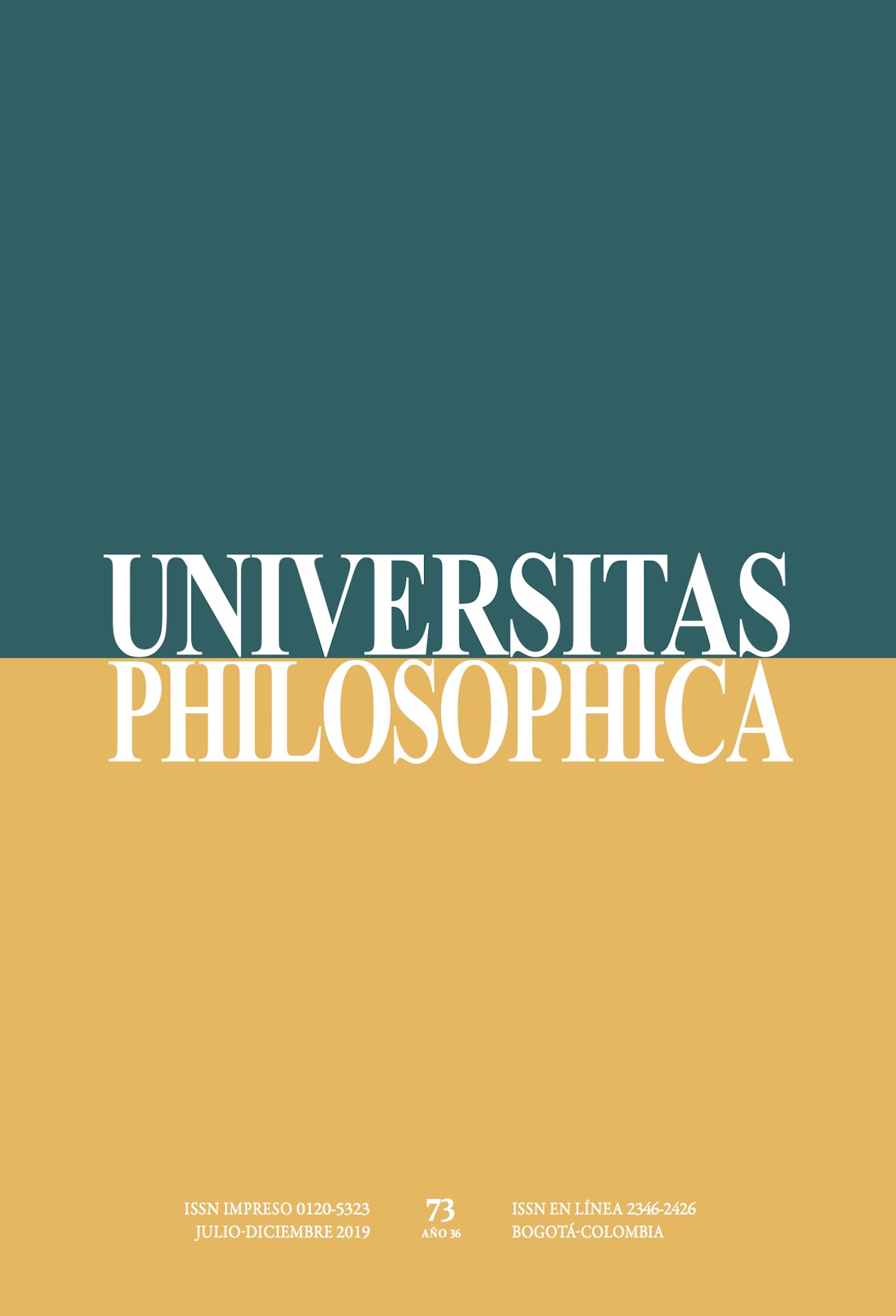Abstract
The Divine Names explores the different names and metaphoric expressions used in the Bible to refer to God. Dionysius the Areopagite is known as an exponent of positive theology, in the sense that he offers an argumentative and explicit account of the nature of God, relying on the Scripture as a source of knowledge and truth, in contrast to the declared inability of apophatic or negative theology to communicate any knowledge of the divine. Indeed, the Areopagite resorts to the study of biblical terms and to the coinage of hapax, neologisms often derived of known terms with added privative prefixes, in order to refer in some way to the sacred. Our research aims at showing that, for Dionysius, the purpose of pursuing the knowledge of God is not only to grasp the order of the different spheres of existence—present across the Corpus Dionysiacum—but also to connect with Him in hénosis, a living experience of permanent tension towards the Supreme. By focusing in the study of the names of God through exegesis, this paper aims at clarifying eutony, a constant tension towards God, as the central theme of the Byzantine theologian’s thought.
Andereggen, I. E. M. (1989). La metafísica de Santo Tomás en la Exposición sobre el De divinis nominibus de Dionisio Areopagita. Buenos Aires: Educa.
de Andía, Y. (1996). Henosis. L’union à Dieu chez Denys l’Aréopagite. Leiden: Brill.
Beierwaltes, W. (1997) Dionysius Areopagites: ein christlicher Proklos? En: Kobusch, T. & Mojsisch, B., Platon in der abendländischen Geistesgeschichte (pp. 71-100). Darmstadt: Wissench Buchgesch.
Bezerra, C. C. (2007) Apóphasis y kénosis en Dionisio Areopagita. Teorema, 26(1), 117-130.
Bezerra, C. C. (2009). Dionísio Pseudo-Areopagita: Mística e Neoplatonismo. São Paulo: Paulus.
Cavallero, P. A. (2004). Las ideas-clave de Los nombres divinos de Pseudo Dionisio según el uso léxico. Temas Medievales, 12, 131-146.
Cavallero, P. (2007) Introducción. En: Dionisio Areopagita, Los nombres divinos (1ª ed., trad. P. A. Cavallero). G. Ritacco (Ed.). Buenos Aires: Losada.
Corsini, E. (1962). Il trattato De divinis nominibus dello Pseudo-Dionigi e i commenti neoplatonici al Parmenide. Torino: Giappichelli.
van den Daele, A. (1941). Indices Pseudo-Dionysiani. Louvain: Les Belles Lettres.
Dionisio Areopagita (2007). Los nombres divinos [DN]. (1ª ed., trad. P. A. Cavallero). G. Ritacco (Ed.). Buenos Aires: Losada.
Dionisio Areopagita. (2008). La jerarquía celestial. La jerarquía eclesiástica. La teología mística. Epístolas. (Trad. P. A. Cavallero). Buenos Aires: Losada.
Fernández Fernández, Á. (2011) La teúrgia de los oráculos caldeos. Cuestiones de léxico y de contexto histórico. Granada: Editorial de la Universidad de Granada.
Fischer, J. (2001). The Theology of Dis/similarity: Negation in Pseudo-Dionysius. The Journal of Religion, 81(4), 529-548. doi: 10.1086/490935
Janowitz, N. (1991). Theories of Divine Names in Origen and Pseudo-Dionysius. History of Religions, 30(4), 359-372. doi: 10.1086/463246
Luck, G. (1989). Theurgy and forms of worship in neoplatonism. En: Neuser, J. (ed.), Religion, science and magic in concert and in conflict (pp. 185-228). New York: Oxford University.
Molina Ayala, J. (2010). Teúrgia: camino de Jámblico a lo inefable. Diánoia, 55(65), 125-149.
Nieva, J. M. (2002). Jerarquización y divinización del hombre. Universitas Philosophica, 19(38), 139-149.
Pantelia, M. (Dir.) (2011). The Online Liddell-Scott-Jones Greek-English Lexicon (LSJ). Consultado el 24 de mayo de 2019, en http://stephanus.tlg.uci.edu/lsj/#eid=325
Peirce, C. (1932). Collected Papers of Charles Sanders Peirce: Principles of Philosophy and Elements of Logic, vols. I-II, Hartshorne, C. & Weiss, P. (eds). Cambridge: Harvard University Press.
Perl, E. D. (2007). Theophany. The Neoplatonic Philosophy of Dionysius the Areopagite. New York: New York Press.
Rolt, E. (2000). Dionysius the Areopagite: On the Divine Names and the Mystical Theology. London: Christian Classics Ethereal Library.
Rorem, P. (1984). Biblical and Liturgical Symbols within the Pseudo-Dionysian Synthesis. Studies and Texts (vol. 71). Toronto: Pontifical Institute of Mediaeval Studies.
Saffrey, H. D. (1990). Nouveaux liens objectifs entre le Pseudo-Denys et Proclus. En: Saffrey, H. D, Recherches sur le Néoplatonisme, Histoire des doctrines de l’Antiquité classique 14 (pp. 227-248). Paris: Vrin.
Saffrey, H. D., & Westerink, L. G. (1968). Proclus : Théologie platonicienne (vol. 1). Paris: Les Belles Letres.
Stang, C. (2010). La herencia cristiana de la teúrgia pagana (Trad. C. Blanco). En: M. López Salvá (Ed.), De cara al Más Allá: Conflicto, convivencia y asimilación de modelos paganos en el cristianismo antiguo (pp. 185-202). Madrid: Pórtico.
Stiglmayr, J. (1895). Das Aufkommen der pseudo-dionysischen Schriften und ihr Eindringen in die christliche Literatur bis zum Laterankonzil. Lausgruber: Feldkirch.
Vanneste, (1958). Le mystère de Dieu, essai sur la structure rationelle de la doctrine mystique du Pseudo-Denys l’Aréopagite. Bruselas: Desclée de Brouwer.
Vega, A. (1999). La huella del desierto en el Maestro Eckart. Revista de Filosofía, 24-25, 49-72.
Vogel, C. (1993). Platonism and Christianity: A Mere Antagonism or a Profound Common Ground? (Trad. E. Peroli). Milano: Vita e Pensiero.
Wear, S. K., & Dillon, J. (2007). Dionisyus and the Neoplatonist Tradition. Aldershot: Ashgate. doi: 10.4324/9781351159845

This work is licensed under a Creative Commons Attribution 4.0 International License.
Copyright (c) 2019 Gabriela de los Ángeles Caram



